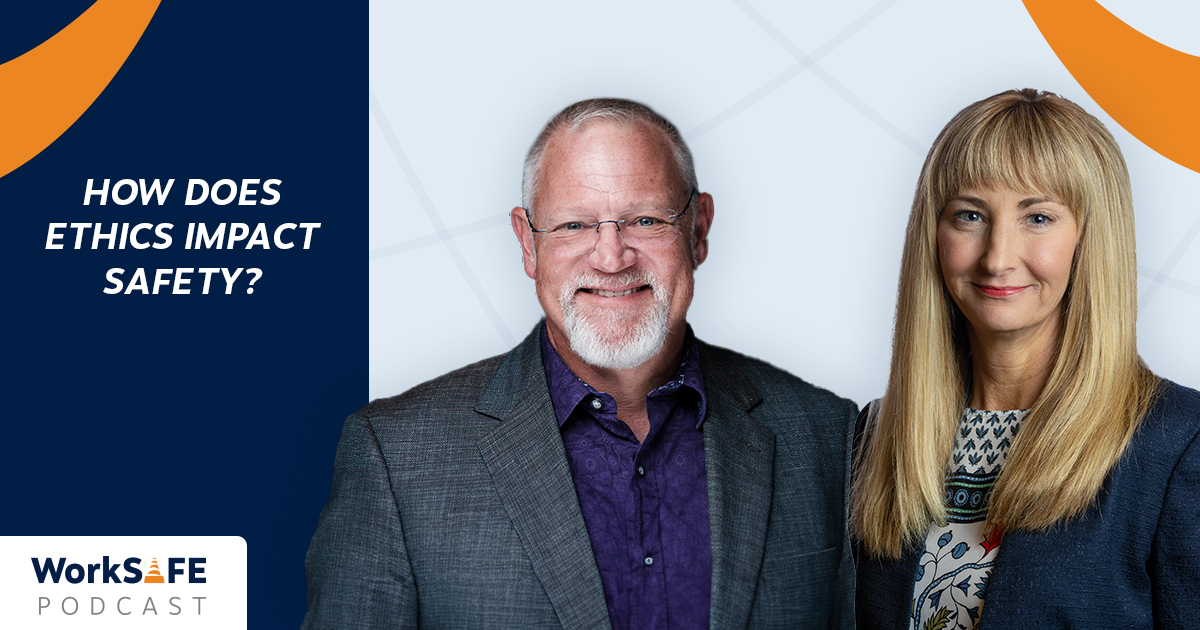For Media Inquiries
Contact Revee White, Director of Marketing and Communications at rwhite1@mem-ins.com or 573.499.4190.
Safety in the job is widely associated with doing the right thing. That usually translates into performing our workplace duties in an ethical way. However, no one is perfect. Unexpected scenarios often require us to pivot from our usual way of doing things. The challenge in maintaining the ethics of safety is often more gray than just black and white.
On this episode of the WorkSAFE Podcast, we sit down with Dr. Dan Snyder, the owner and founder of Safety Mentor. The platform is designed to aid in the adaptive challenges health and safety professionals face. He has successfully mentored more than 30,000 professionals in achieving their Health, Safety, and Environment (HSE) certification.
First, we’ll discuss how ethics impact the choices we make around safety. Then, we’ll share ways that employers can make ethical decisions, even when a situation isn’t black and white. Finally, we’ll talk about a simple method business owners can start using today to make better choices around safety.
Listen to this episode on the WorkSAFE Podcast, or read the show notes below.
The ethics of safety: Deciding what is right and wrong
As a society, we hold certain attitudes about what is right and wrong. We might refer to these as making ‘moral’ decisions or ‘ethical’ choices. These two terms are often used interchangeably. But they aren’t exactly the same thing. “Really, morality is just the idea of making choices with reasons, and ethics is really the study of how those choices are made,” Dr. Snyder explained. “So really, ethics is kind of the study of morality.”
Morality colors our attitudes around safety in the workplace. In the U.S., employers are seen as having a responsibility to protect workers, avoid hazards, and comply with laws and industry regulations. A code of ethics often reinforces how employers should prioritize these responsibilities in the face of business demands and goals.
A common workplace dilemma
Dr. Snyder finds the bigger ethical dilemmas happen when business cases are put up against health and safety. Company leadership must decide what Dr. Snyder terms “an acceptable level of risk”. For example, how much overtime is enough to get the job done, but prevent employees from facing injuries and fatigue? Or, when is the right time to hire extra help for an overburdened team?
A code of conduct helps ensure a baseline of safety and care. “A lot of times in business and industry, our role as an advisor or a moral agent or a safety health professional, is to really try to find those long-term feasible sustainable solutions that are you know, fair to the company and the corporation, but then also fair to the worker.”
When ethical issues show up in the workplace
When an ethical issue appears in the workplace, Dr. Snyder considers it essential to look at the intent and the outcome. Did an employer do everything they could to create a safe workplace and prevent injuries from the beginning? Or did it not matter how a job was done, as long as the outcome was that no one got hurt?
How to make an ethical decision
- Recognize there is an ethical issue. What are your goals? How do they conflict with safety ethics or standards? For example, meeting delivery quotas when weather makes roads hazardous for employees to drive.
- Gather all the information. The best way to make an informed decision is to have all available information. What are all the available options? How does this impact internal and external stakeholders?
- Take action. Don’t leave the ethical decision unaddressed. Implement a decision.
A reality of decision-making is that there sometimes is gray area. Dr. Snyder recommends monitoring all outcomes of an ethical decision once it’s made. That means seeking feedback, including the impact of a decision and how employees are feeling about it.
For instance, an employer may choose to put employees working in a hot environment into extra layers of personal protective equipment (PPE) to protect them. The employer then needs to talk to the team about how that choice impacts their everyday work. Is there an increased risk of heat stress or stroke? Does the added gear make getting the job done more difficult? Can the work be done in a safe manner without it? The answers to these questions help determine if the employer’s course of action is ethical or not.
The ethics of safety: Navigating the gray area
More often than not, employees are vocal the tough decisions they face around work. For example, reporting for work in bad weather, or skirting around safety processes because demands on production are up. They worry about how their choices might impact their ability to keep their jobs.
In these situations, Dr. Snyder offers a straightforward solution. “I think the the real quick and easy answer is lead by example,” he said. “I think every organization’s a little different, and you know, the fish stinks from the head down.” Safety is part of an organization’s overall culture. If a company is struggling with ethical issues when it comes to safety, then there is a good chance they exist in other areas, too.
Don’t let productivity override a culture of care
Employers should strive to make ethical decisions at every opportunity. This includes pulling employees out of unsafe situations, or preventing them from getting involved in the first place. However, some employers run businesses that are essential, even in hazardous conditions. Dr. Snyder recommends putting controls in place to minimize risk. For instance, adjusting delivery times, loads, and routes for drivers working on high-hazard weather days.
Every business decides what their acceptable level of risk is. “Some companies believe that putting somebody in a certain level of of harm’s way or risk is is untenable, and we’re not going to do that – it’s not worth the outcome,” Dr. Snyder added. Employees in these types of cultures feel they have more of a voice. They integrate into safety efforts more easily, and while they don’t always agree, they feel that their safety and perspective is taken into account.
How safety ethics strengthen the workplace
Making the right choice for employees and a business isn’t always easy. “Safety is millions of decisions a second, by hundreds of people in an organization, but per second,” Dr. Snyder shared. Reflection plays a critical role in ethics. For him, it’s essential to assess ethics or the code of conduct in your own organization. What change do you want to see? What is necessary to make that change happen?
The process can be as simple as talking to employees and dividing issues into green, yellow, and red zones. Issues that land in the green zone often don’t need significant change, if any at all. The yellow zone is a category for issues that do need to be addressed; more information, research, or leadership feedback might be required first. And the red zone is for issues that need immediate attention. For example, witnessing harassment or discrimination in the workplace.
Most importantly, Dr. Snyder points out that there’s no one source that will solve every issue. The goal of using different methods is to find the one that works for your business, your employees, and at this point in time. “Ethics is a self-reflection, by the way,” he explained. “There is no golden book or source that’s going to give you all the answers. It’s a lifelong journey.”



